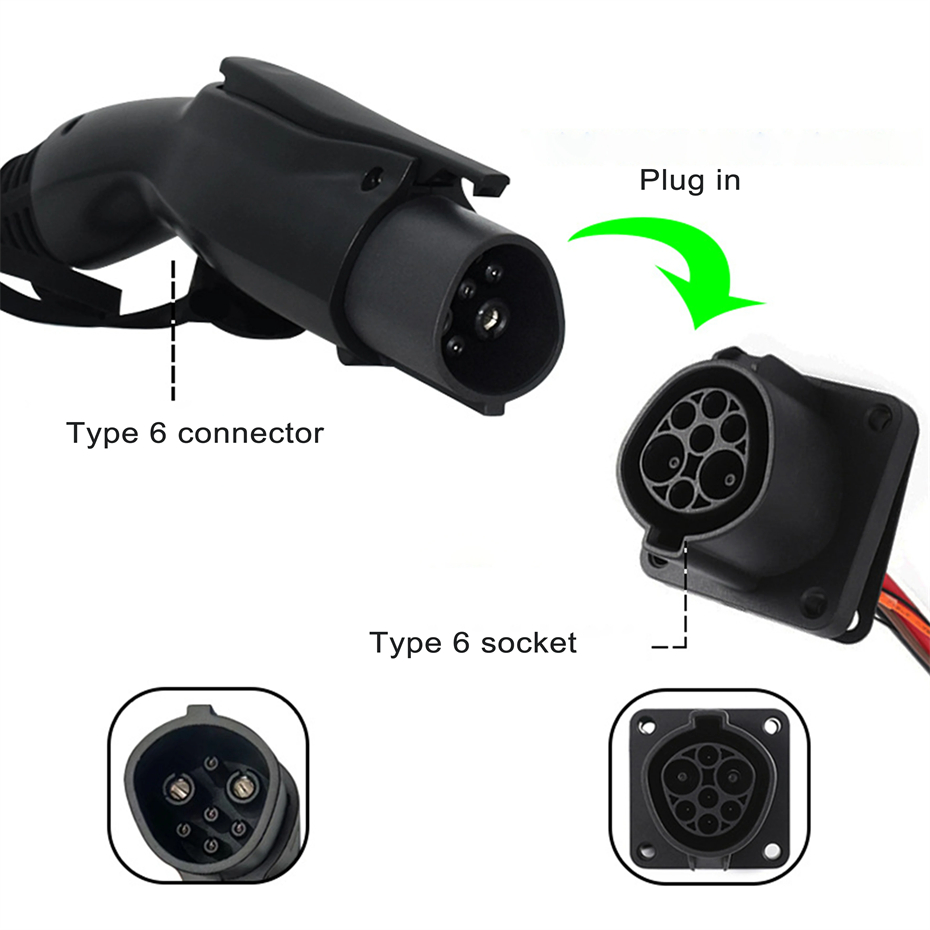India’s Electric Two-Wheeler Market Shifts Toward Unified Fast-Charging Connectors
India's transportation sector is rapidly embracing electric mobility, with electric two-wheelers playing a pivotal role in this transformation. As the demand for electric scooters and motorcycles accelerates, the need for reliable and standardized fast-charging systems has grown significantly.
Currently, the push to establish a common charging framework for electric two-wheelers in India centers around two primary EV Charging connector types: Type 6 and Type 7 or DC fast charging.
Understanding Type 6 Connectors
Type 6 connectors, also known internationally as TES-0D-01-01 (particularly in Taiwan), are becoming increasingly favored by leading EV brands in India. These connectors are integrated into several prominent models, including the Ola S1 Pro, Tork Kratos R, Ultraviolette F77, and Simple One.
Supported by the Bharat Charge Alliance (BCA), the Type 6, also called Dash-6 (based on IEC 62196-6), represents a strategic move toward an efficient high-speed charging network. Ola Electric, a major force in the electric two-wheeler segment, has already deployed around 200 fast-charging points across over 50 cities nationwide.
Ultraviolette, on its part, offers a portable "boost" charger, and Tork has implemented its proprietary T-Net fast-charging setup. The wide-scale acceptance of Type 6 across these brands points toward its strong potential to become the de facto standard for high-speed charging in the electric two-wheeler category.
Explore Type 6 Charging Solutions

Type 7 Connectors and the Rise of IS17017
Simultaneously, Type 7 connectors have carved a dominant position in India's fast-charging landscape, largely thanks to Ather Energy’s initiative. Ather introduced an open-source charging system tailored for light electric vehicles (LEVs), forming the basis of a unified standard.
This EV Charging connector design was officially codified as IS17017 by the Bureau of Indian Standards (BIS). Type 7 connectors are versatile, offering up to 7.7 kW for AC charging and a peak of 12 kW for DC fast charging. Their flexible architecture allows for smoother integration across a range of vehicle designs and enhances the scalability of charging networks.
The standard’s uptake by Hero MotoCorp, especially in the launch of their Vida V1 and associated charging infrastructure, further legitimizes Ather’s efforts. This collaboration is playing a key role in enhancing accessibility and reach of the EV charging grid across India.
Other EV Makers Moving Forward
The growing recognition of IS17017 as the national benchmark is an essential milestone in India’s electric vehicle evolution. Many EV producers and charge point network providers are aligning with the Type 7 connector framework. Ather Energy, despite spearheading this protocol, is also adapting alongside the broader shift taking place across the industry.
As more electric vehicle companies converge on a universal charging interface, customers can expect a more seamless experience. That said, brands like Ola, Tork, and Ultraviolette remain firmly invested in the Type 6 ecosystem—highlighting that both connector types currently have strong market representation.
Conclusion
The emergence of Type 6 and Type 7 EV Charging connector reflects a critical phase in India’s journey toward widespread electric mobility. Standardization of charging ports ensures that users can access compatible chargers more easily, regardless of brand. This unified direction, driven by both competition and collaboration among EV manufacturers, is set to make charging infrastructure more user-friendly and accessible across the country.
At Senku, we welcome discussions and questions about the fast-evolving electric vehicle sector. If you're curious to learn more or would like to engage further, don’t hesitate to get in touch with us.
hashtags: #type6 #evconnector #evchargingconnector


 Senku ,Bake
Senku ,Bake Senku
Senku